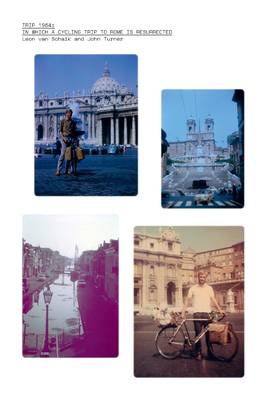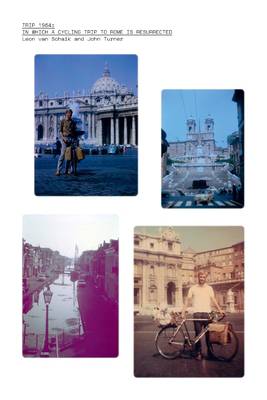
- Afhalen na 1 uur in een winkel met voorraad
- In januari gratis thuislevering in België
- Ruim aanbod met 7 miljoen producten
- Afhalen na 1 uur in een winkel met voorraad
- In januari gratis thuislevering in België
- Ruim aanbod met 7 miljoen producten
Trip 1964
in which a cycling trip to Rome is resurrected
Leon Van Schaik, John TurnerOmschrijving
1964, Spring. Two young men, John Turner and Leon van Schaik, school friends, still in their teens, set off from England to cycle to Rome, their "Trip64". Leon wrote a daily journal, John drew and photographed. That journal structures this account, and the timelines are derived from it. Leon's first Trip64 night on 6 May (Day 1) was spent in Ostend Youth Hostel and John's first night on 27 May (Day 22) was under canvas in a field close to Maassluis. They met up on 31 May (Day 26) in Amsterdam and remained together until arriving back in England in early August. When the trip ended, they were home in Buckinghamshire, preparing for university. An unremarkable 'gap-year' activity you might think, yet that journey cut through a world barely recognisable today. The Second World War still formed a bell jar over everything, colouring our perceptions. Even in the early 1970s the wearing of a leather coat evoked sinister associations. The Iron Curtain hung across Europe, limiting the horizon. A veil of fascism hung over Spain and was soon to occlude Greece. 1984 lay in the unimaginably distant future. The Campaign for Nuclear Disarmament was mounting its marches from Aldermaston to Trafalgar Square. The lives of adults were framed by reconstruction. Although British Prime Minister Harold Macmillan had announced "you've never had it so good" on 20 July 1957, the full force of the post war economy lay ahead, and Jean Baudrillard's book 'The Consumer Society' was to be published in 1970. Cars did not yet dominate roads. In England, traffic jams hardly happened except in The New Forest on August Bank Holiday. Travel was an adventure for the young, and a 1957 book explaining how to do 'Europe on Five Dollars a Day' when six dollars equalled 20 shillings seemed targeted on wealthy Americans. That many shillings would last a week, as the soon to be students would discover. And most alien to how we live now, life was lived in analogue. The internet lay fifty years ahead. The boys had planned their journey in advance, plotting routes using a guide to the location of Youth Hostels, and having no guarantee that there would be a place in one until they arrived and knocked on the door. Contact with home was by post to a few pre-planned collection sites. Each photograph taken had to be carefully considered as film was so expensive. The past is a different world.
We, the septuagenarians that those young men now are, have been haunted by vivid memories of how things were, when we were there. That is why we have now marshalled and cross-referenced the journal written by one of the cyclers, the photos, surviving artefacts and drawings of both, into as accurate a recollection as we can conjure. Framed by independent introductions and concluding reflections, a three-part timeline for the trip structures the material. Part 1 documents solo journeys through the lowlands and concludes with our meeting in Amsterdam. Part 2 covers the journey to Venice; Part 3 carries through to Rome. There are mysteries. Some days seem to have gone missing. No amount of trawling resurrects a shared account of the journey home from Rome. Maybe that is apt for what was a pilgrimage through a little of west European culture, a journey towards adulthood, spiritual only in that sense. Even then, the weight of the future pressed on what was said and recorded. We were 'such stuff as dreams are made on', and our 'little lives' beckoned. There are delights here. See for yourself!
Specificaties
Betrokkenen
- Auteur(s):
- Uitgeverij:
Inhoud
- Aantal bladzijden:
- 384
- Taal:
- Engels
Eigenschappen
- Productcode (EAN):
- 9780648428626
- Verschijningsdatum:
- 13/07/2022
- Uitvoering:
- Paperback
- Formaat:
- Trade paperback (VS)
- Afmetingen:
- 152 mm x 229 mm
- Gewicht:
- 712 g

Alleen bij Standaard Boekhandel
Beoordelingen
We publiceren alleen reviews die voldoen aan de voorwaarden voor reviews. Bekijk onze voorwaarden voor reviews.









